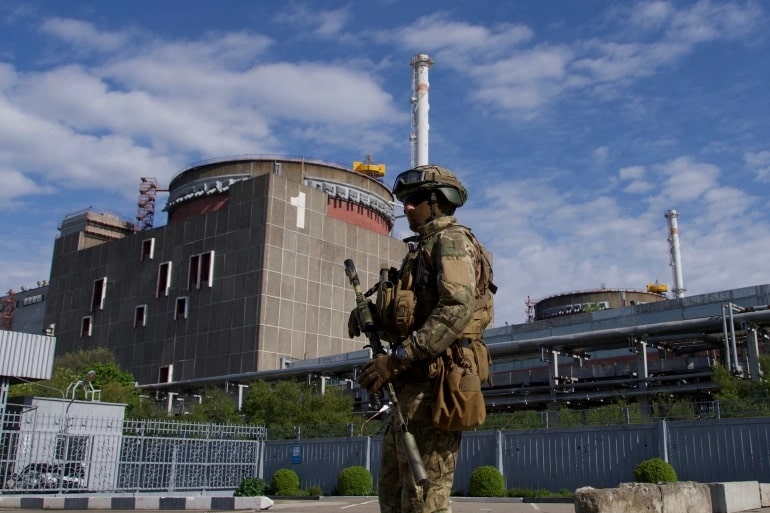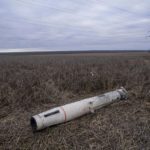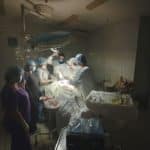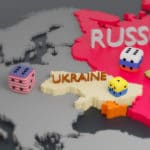Why the Nuclear Power Plant in Ukraine Is so Widely Discussed Today

The world’s nuclear watchdog is visiting the Zaporizhzhia Nuclear Power Plant in Ukraine this week amid concerns sparked by shelling around the plant.
Rafael Grossi, director general of the International Atomic Energy Agency (IAEA), warned last month that military action around the plant raised “very real risk of nuclear disaster.”
Experts say the effects of such a disaster could lead to radiation leakage that impacts the local communities, but would most likely not lead to a global catastrophe.
So what are the stakes for Ukraine and the world if Russia’s war leads to a nuclear disaster?
“The kind of shelling we’re seeing should not be a significant impact on the reactors. In the way that it’s being done now, which is, you know, occasional shelling,” said Jonathan Cobb, senior communication manager at the World Nuclear Association.
Ukraine has 15 nuclear reactors that generate half of its electricity, according to the World Nuclear Association. Six of these reactors are located at the Zaporizhzhia plant.
The Zaporizhzhia plant has been under Russian control since the early days of its invasion of Ukraine, even though Ukrainian workers still operate the plant.
The facility — the largest nuclear plant in Europe — is directly on the front lines of the fighting between Russian and Ukrainian forces.
The IAEA’s visit comes days after Ukraine warned of “renewed shelling.” In a statement released Aug. 28, the IAEA said the shelling hit the area of the plant’s “two special buildings” which house facilities like water treatment plants, equipment repair shops and waste management facilities.
All measurements of radioactivity at the site were within normal range, and there was “no indication of any hydrogen leakage.”
Jacopo Buongiorno, a professor of nuclear engineering at the Massachusetts Institute of Technology, said nuclear plants must be continuously cooled, meaning there has to be a way to remove heat generated by nuclear fuel. If the plant is connected to Ukraine’s electric grid, then the cooling is provided by water pumps that are powered by the grid.
If not, then the plants have emergency diesel generators that can provide that power.
“In a well-functioning, peacetime nuclear power plant, all these layers of protections and barriers are there. They work perfectly well,” Buongiorno said. “And now, there is no indication that they’re not working well, either.”
There have only been two major accidents related to nuclear reactors in history. The first was Chernobyl in 1986, when a reactor when out of control during a test, leading it to explode.
More recently, in March 2011, Japan was hit by a major earthquake followed by a tsunami that led to power loss at the Fukushima Daiichi plant. The power led to the cooling systems failing in three reactors, causing the core to overheat.
Experts say the worst-case scenario at Zaporizhzhia would look more like what happened in Fukushima rather than what happened in Chernobyl.
Fighting between the Russians and Ukrainians could disrupt the cooling mechanism of the reactors, which could cause the core to overheat, leading it to melt — often referred to as a nuclear meltdown.
But getting to a nuclear meltdown would take a major event, experts say, because the reactors themselves have six-feet-thick concrete containment vessels protecting them.
“At least in theory, if even if there was a direct hit, there would be at least some protection,” said Mitchel Wallerstein, a nonresident senior fellow at The Chicago Council.
The greatest concern in such a scenario is for the local population that lives around the area.
The Ukrainian government has reportedly begun distributing potassium iodide pills, which help prevent inhaled or swallowed radioactive iodine from being absorbed by the thyroid — a gland located in the neck that makes hormones to help to regulate the many functions of the body, such as its metabolic rate. Exposure to radiation can increase the risk of developing thyroid cancer.
The European Union even said Wednesday that it is donating 5.5 million of these tablets at the request of the Ukrainian government.
Despite the protections at Zaporizhzhia holding for now, experts see high value in the IAEA’s visit.
All but five of the 14 inspectors had left the plant as of Thursday, along with Grossi, with the remaining scheduled to leave Saturday.
While there, the team will assess the safety of the plant and assess safeguards and equipment to monitor nuclear material, as well as checking on the Ukrainian workers at the facility.
“These workers have been running the plant in occupied territory essentially for six months,” Cobb said. “And there have been reports — as yet, unconfirmed … of poor treatment of the workers by the Russian forces there.”
Olli Heinonen, a former IAEA deputy director general who is now a fellow at the Stimson Center, said the agency is there to gather evidence and records of how the reactors have been operating in recent months.
“I would expect that this will take four or five days,” Heinonen said. “If it is shorter then I think that they will come back with less information, and I’m sure Mr. Grossi will not agree to that. But on the other hand, they are in the hands of the occupying force.”
In a video posted to Twitter, Grossi said the agency will establish a “continued presence” at the plant, which experts said would be a valuable move.
“Just reporting on conditions would be a very valuable service. Maintaining that safeguard function, and as being an independent United Nations presence there that could report as best they could, on the way in which the workforce has been treated by the Russian military forces on the site,” Cobb said.
“That would be a very sensible and valuable function that they can provide.”
Source: thehill.com









